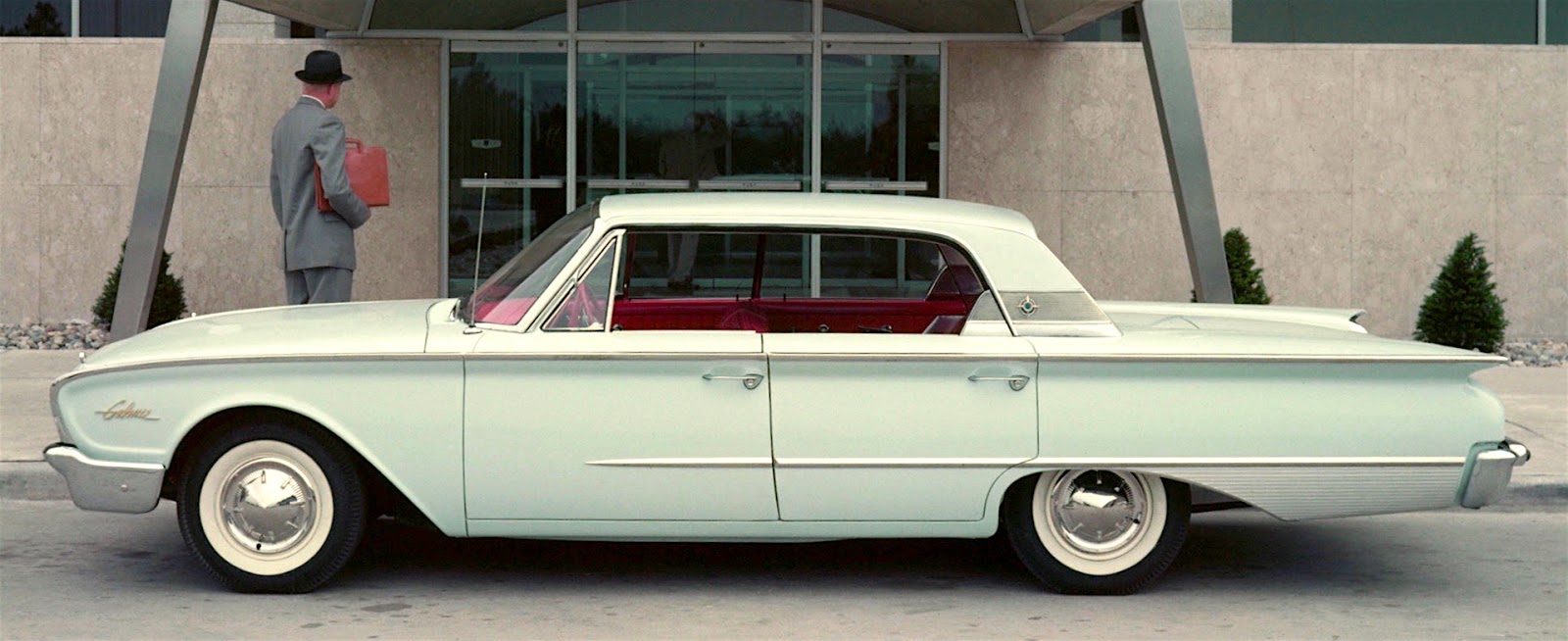A reaction set in around 1960 when simpler designs began reaching the market. And given the three or so years lead-time from sketchpad to production, stylists were probably thinking of simplification as early as 1957.
An example of incipient change might be the 1958 Ford Motor Company show car called La Galaxie. It included some jet plane detailing, but lacked tail fins and a three-tone paint-job.
There are few decent photos of La Galaxie on the internet. Some of the ones shown below had to be cleaned up, and still aren't top-drawer quality.
Headlight assemblies resemble jet fighter air intakes. But the rest of the details seen from this angle are not from that source of inspiration.
Viewed from the side, La Galaxie's styling is fairly clean. Much of that is due to the simple fender line and skirted rear wheels. Visual boredom is reduced by the character line on the rear fender area and the decorative panel straddling the front wheel opening. Note that the angle at its aft end is echoed by the window sill interruption and the cut of the transparent roof panel. For some reason, I've always been fond of the side window treatment of La Galaxie even though it's not practical for notional back seat passengers.
La Galaxie's rear aspect strikes me as being more science fiction inspired than jet fighter based. Those huge "exhaust outlets" are out of scale to the rest of the car. The continuation of the rear fender character crease into these zones helps tie the ensemble together, however. The reverse-angle backlight (rear window) was a detail toyed with during the 1950s. It saw production on 1958 Lincoln Continental Mk. IIIs, for example.
This low-quality image shows La Galaxie in color.
This is Elwood Engel, the man in charge of Chrysler Corporation styling. In the 1950s he worked at Ford. Behind him is the 1963 Chrysler Turbine Car powered by a gas turbine engine conceptually similar to those in actual jet fighters. Around 50 Turbine Cars were built, many intended for testing by ordinary drivers. Most were destroyed later.
The headlight housings have a jet-intake appearance in the same spirit as those on La Galaxie.
The aft end of the Turbine Car bears even closer resemblance to La Galaxie's. The parts of the body between the ends is similar to some Ford Thunderbirds and Continentals. The front and rear end designs make the Turbine Car impractical for normal use -- poor front protection and inconvenient trunk access at the rear. But the true production killer was the impracticality of gas turbine engines for automobiles. The jet fighter styling cues are appropriate for once, given the presence of the engine.





















































